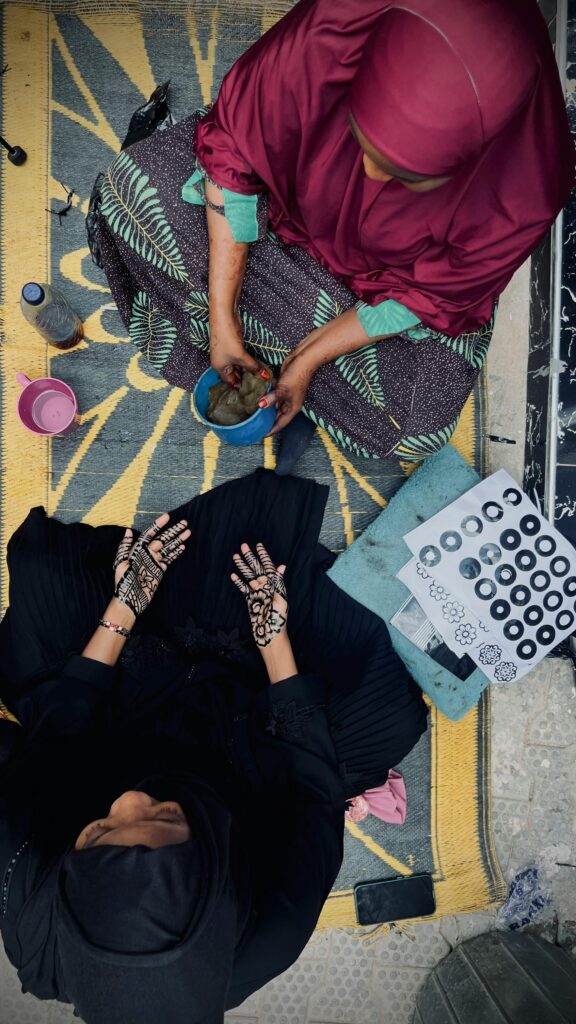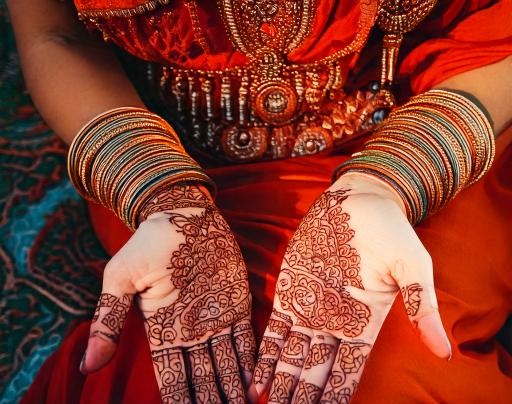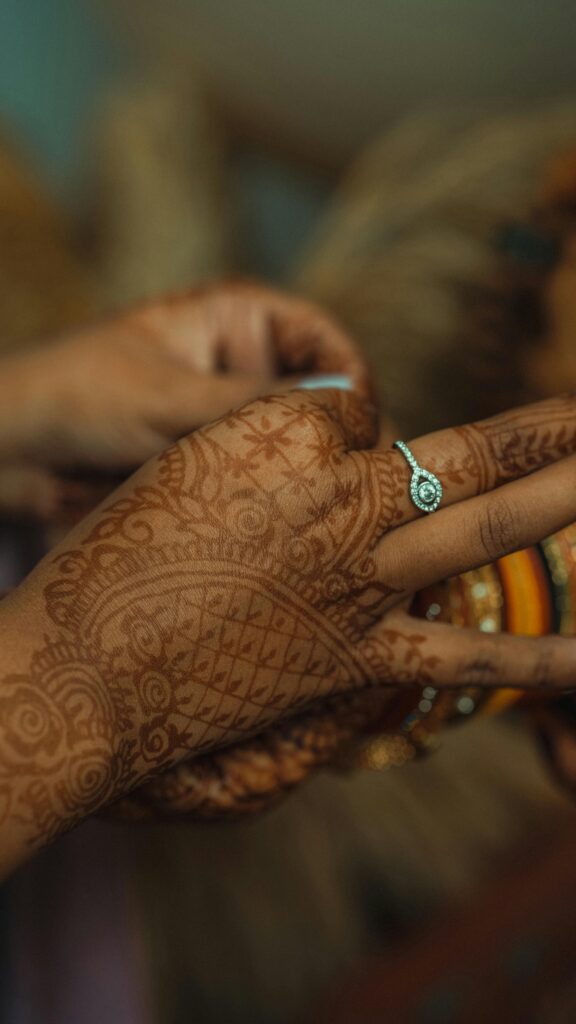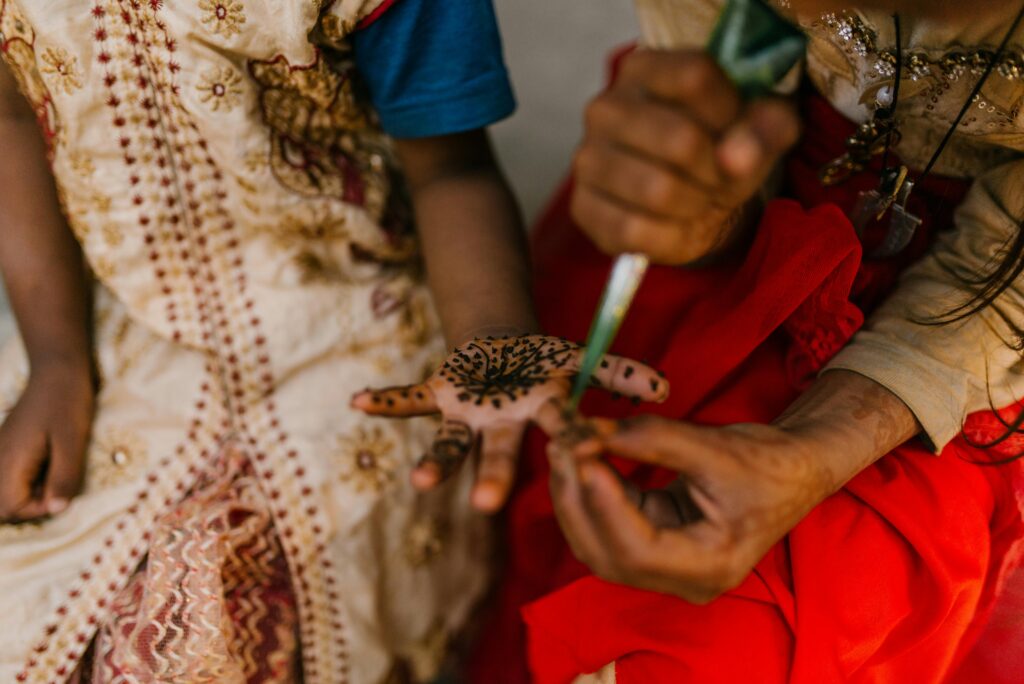Henna is more than just a plant in Morocco—it’s a symbol of celebration, beauty, and spiritual protection. Its intricate patterns tell stories of heritage, femininity, and the deep-rooted traditions that shape Moroccan culture. Join us as we explore the rich history and cultural significance of Moroccan henna art, revealing how this ancient practice continues to thrive in modern times.




A History Painted in Patterns
The use of henna in Morocco dates back thousands of years. Derived from the leaves of the Lawsonia inermis plant, henna has been cherished for its natural dyeing properties and cooling effect on the skin. While its exact origins are debated, its presence in North Africa has long been associated with cultural identity and personal expression.
For centuries, Moroccan women have adorned their hands and feet with henna designs for special occasions—weddings, births, and religious celebrations. Unlike temporary fashion trends, these patterns hold deep cultural and spiritual meanings, passed down through generations. Henna art represents protection from evil spirits, blessings for prosperity, and the celebration of joy.
The Henna Ceremony: A Celebration of Life
One of the most significant cultural expressions of henna art in Morocco is the Henna Night (“Laylat Al Henna”), a pre-wedding ritual filled with music, laughter, and symbolism. The bride’s hands and feet are meticulously decorated with intricate patterns, signifying beauty, happiness, and fertility. The designs are applied by a skilled henna artist, often an elder or a professional known as a “naqasha,” who brings years of expertise and artistic flair.
This ceremony is not only a beautification ritual but also a gathering of women to share wisdom, blessings, and songs. The application of henna marks the bride’s transition from maidenhood to marriage, a journey celebrated with warmth and unity.
The Language of Designs
Every henna design in Morocco carries its own meaning, reflecting themes of nature, protection, and spirituality. Common motifs include:
- Flowers and leaves: Symbols of growth, beauty, and the cycles of life.
- The fish: A protective motif against the evil eye.
- Triangles and geometric shapes: Representations of strength and balance.
Each region of Morocco has its own style of henna art. In the south, bold geometric patterns dominate, while northern areas favor floral and delicate shapes. The Amazigh (Berber) influence is prominent in designs that incorporate tribal symbols reflecting heritage and cultural pride.
Henna in Everyday Life
While henna is often associated with weddings, it also plays a role in other life events and religious celebrations. During Eid al-Fitr and Eid al-Adha, women and children apply henna to mark the joyous occasion. Mothers often use simple designs on their children’s hands to protect them from harm.
Henna’s use extends beyond body art. It is a popular natural dye for hair, known for its conditioning benefits, and is sometimes used to tint fabrics and leather in traditional craftsmanship.
The Modern Revival
In recent years, henna art has seen a resurgence in global fashion and beauty. Moroccan henna artists have gained international recognition, blending traditional patterns with contemporary aesthetics. However, within Morocco, the practice remains deeply rooted in its original purpose—a celebration of life, protection, and community.
Conclusion
The tradition of Moroccan henna art is a testament to the enduring beauty of cultural heritage. It is a living art form that bridges the past and present, weaving stories of identity, spirituality, and artistry onto the canvas of human skin. Whether adorning a bride’s hands on her wedding night or decorating a child for a festive occasion, the intricate designs continue to celebrate the essence of Moroccan culture—rich, vibrant, and filled with meaning.
Thanks for joining me on this journey!
I’d love to hear your thoughts—feel free to share them in the comments below!
Abdelilah Hamma
Follow me on Instagram for more travel inspiration!
January 14, 2025
